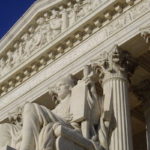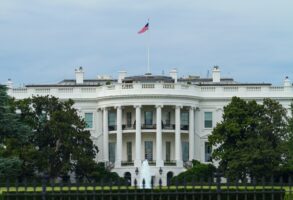Published May 18, 2015
Buffalo Law Review - Volume 63, Issue 2 (April 2015)
Todd Pettys’s critique1 of the Epstein-Parker-Segal study2 is devastating, but there is one point that I think he gets wrong. Noting that Epstein, Parker, and Segal “urge other researchers to join the search for in-group biases among judges and justices, both within the free-expression realm and beyond,” Pettys calls this “a good proposal.”3 No. There is no reason to think that the tools of modern political science are capable of generating meaningful insights into whether in-group bias affects judicial decision-making.
First, as Pettys shows,4 the general enterprise of identifying whether a justice would perceive a litigant to be part of the justice’s ideological in-group is fraught with intractable difficulties. What information about the litigant should the justice be deemed to know? Does the relevant inquiry focus on the perceived ideology of the litigant or on the perceived ideological valence of the litigant’s cause in the particular case? (Note here the curious claim by Epstein, Parker, and Segal that Pettys is “too focused on the ideological characteristics of the speaker rather than the speech.”)5 How sensible is it to assume that all justices classified as conservative or as liberal have identical ideological in-groups? Is Justice Breyer’s ideological in-group really the same as Justice Sotomayor’s? Or is Justice Kennedy’s the same as Justice Alito’s? How can political scientists plausibly engage in the psychological projection that assignment of ideological in-groups entails? Pettys professes himself “skeptical” that this in-group identification could “be satisfactorily done.”6 I would go further, as I do not see how it ever could be.
A second and deeper problem is that modern political science deprives itself of any benchmark for assessing the effect of in-group bias. What political scientists used to understand “was that the most important question about every Supreme Court decision is also the most interesting question to the ordinary citizen, to the student, and hence to the scholar as well—i.e., was it rightly decided?”7 By positing how a justice should have voted, political scientists could then explore the possible reasons why the justice voted otherwise. But the “behavioral revolution”8 in political science that occurred in the middle of the twentieth century is built on the assumption that judicial decision-making is best understood as the playing out of the subjective motivations of judges. It has led to “the complete neglect of legal reasoning, and the near-total exclusion of legal principle as a causal force in judicial decision-making.”9
The Epstein-Parker-Segal study is a typical example of the behavioralist, or attitudinal, model. The authors never even ask whether a particular Supreme Court decision they code might be rightly decided. Nor do they exclude unanimous rulings from their study. On the contrary: if a unanimous ruling is in favor of a speaker whom they code to be conservative, that ruling ipso facto provides evidence for them that the conservative justices have indulged their ingroup bias and that the liberal justices have overcome theirs.10 And, vice versa, of course, for unanimous rulings for liberal speakers.
When Epstein, Parker, and Segal compile their simplistic binary codings, they generate seemingly sophisticated tables replete with statistical measures, to the third decimal place, of mean, standard deviation, Bayesian credible intervals, and more.11 The only appropriate response, I would suggest, is to laugh out loud at the pseudo-scientific absurdity.
Epstein, Parker, and Segal purport to assess whether the voting pattern of a justice is “statistically significant.”12 But without taking a position on how the ideal justice should rule in the various cases—an enterprise that would require the exercise of legal judgment and that would, of course, be highly contestable—they have no benchmark against which to measure an actual justice’s voting pattern. They implicitly assume that the ideal justice would vote for liberal speakers at the same percentage level as for conservative speakers. That assumption in turn presupposes that the cases in which claims of liberal speakers and conservative speakers arise are equally meritorious. But there is no reason to think that assumption is right, and there are plenty of reasons why it might be wrong.
It might well be, for example, that the cases that reach the Supreme Court disproportionately arise from liberal appellate panels that issue adventuresome rulings for liberal speakers (sleeping as speech, anyone?), and that are hostile to conservative speech claims on matters of religion and abortion. If that is the case, the ideal justice would end up voting more for conservative speakers. For converse reasons, the imbalance could, of course, be in the opposite direction.
To be clear: I do not dispute the possibility that in-group bias might influence judicial decision-making. I simply do not see how studies like the one by Epstein, Parker, and Segal have any hope of meaningfully showing such influence. I am open to the possibility that statistical analysis of voting patterns might discover apparent anomalies that suggest avenues for further exploration. But that further exploration, if it is going to be fruitful, will have to involve the sometimes difficult and often contestable work of legal reasoning—work that is beyond the bounds that modern political scientists have imposed on themselves.
— Edward Whelan is president of the Ethics and Public Policy Center.
1. Todd E. Pettys, Free Expression, In-Group Bias, and the Court’s Conservatives: A Critique of the Epstein-Parker-Segal Study, 63 BUFF. L. REV. 1 (2015).
2. Lee Epstein, Christopher M. Parker & Jeffrey A. Segal, Do Justices Defend the Speech They Hate? In-Group Bias, Opportunism, and the First Amendment, available at http://epstein.wustl.edu/research/InGroupBias.pdf (last visited Feb. 2, 2015) [hereinafter Epstein et al., In-Group Bias].
3. Pettys, supra note 1, at 74-75.
4. See generally id.
5. Appendix C, (Excel version), line 3814 (Sept. 30, 2014), http://epstein.wustl.edu/research/InGroupBias.html (last visited Feb. 5, 2015).
6. Id. at 77.
7. Matthew J. Franck, Book Review, 15 LAW AND POL. BOOK REV. 176, 177 (2005) (reviewing CREATING CONSTITUTIONAL CHANGE: CLASHES OVER POWER AND LIBERTY IN THE SUPREME COURT (Gregg Ivers & Kevin T. McGuire eds., 2004)), available at http://www.lawcourts.org/LPBR/reviews/ivers-mcguire305.htm.
8. Id.
9. Id.
10. See generally Epstein et al., In-Group Bias, supra note 2.
11. Id. at 7-14.
12. Id. at 10 n.18.









